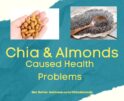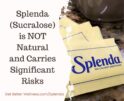
Are Toxins in Your Tap Water? Time to filter!
Are you thinking about filtering your water at home?
Now is the time!
When we moved from IL to TN, we purchased the Aquasana Whole House System and L.O.V.E.D. it! Then we moved again and had to temporarily use a Berkey to filter water, but then we were able to get a 3-stage filtering system from AquaSana because my Berkey couldn’t keep up with filtering water for cooking, drinking, pets and chickens!
If you choose the Whole House Filter, you won’t be getting a chlorine gas overload because our shower and tub are filtered. If you can’t do whole house, then buy individual shower filters from AquaSana.
Top 5 Potential Toxins in Your Tap
When you turn on your tap, you assume the water is safe to drink.
There are regulations in place that set in place safety standards for your water – all covered by the Safe Drinking Water Act.
So why is there so much news about contaminated water and should I worry?
What can I do to protect myself and my family.
Although much of the water provided to the public in the US meets national safety standards, treated water can contain heavy metals and environmental pollutants such as lead, mercury, pharmaceuticals, herbicides and pesticides.
The good news is you can protect yourself and your family through the use of a water filter.
These are the top five toxins we think you should pay attention to and remove with an NSF certified water filter:
1) HEAVY METALS (LEAD AND MERCURY)
Lead is a chemical element that is considered a heavy metal, with symbol Pb (from Latin: plumbum) and atomic number 82. It is used to make batteries, bullets, in building construction and is common in older plumbing. Lead is a neurotoxin and there is no safe level of ingestion.
Mercury is a global pollutant that ultimately makes its way into waterways through industry such as coal-fired power plants or through rain, snow and air pollution. Mercury is another neurotoxin and is stored in your kidneys, blood, brain and liver.
2) PHARMACEUTICALS
Our water continues to be subjected to increasing amounts of pharmaceuticals as our population grows.
“There is a growing concern about the occurance of pharmaceuticals in water bodies and in drinking water. Pharmaceuticals get into the water supply via human excretion and by drugs being flushed down the toilet. You might think wastewater treatment plants would take care of the situation, but pharmaceuticals pass through water treatment.” (source)
Pharmaceuticals are prescribed to millions of people every day and when the human body cannot process an entire prescribed dose, the rest is eliminated through urine. Most of us prefer not to think about it, but the fact remains that pharmaceuticals are in drinking water.
Many studies in the last ten years have detected pharmaceutical compounds in treated wastewater. A recent government study shows over 80% of waterways tested in the United States show traces of common medications such as acetaminophen, hormones, blood pressure medicine, codeine, and antibiotics.
“The source of pharmaceuticals in water is not just from manufacturing plants. You probably know that antibiotics and drugs are used in the livestock industry, and for streams receiving runoff from animal-feeding operations, pharmaceuticals such as acetaminophen, caffeine, cotinine, diphenhydramine, and carbamazepine, have been found in USGS studies.”
Don’t Flush Medications
Prevent medications from ending up in our water by not flushing them down the toilet.
Find a Quality Filter
Owning a water filter designed to filter certain chemicals and toxins from your drinking water can decrease the chance of pharmaceuticals making their ways into your home.
Aquasana filters are NSF certified to remove pharmaceuticals from water. Patented Claryum® Technology = Healthy, Delicious Water. Claryum® filtration removes the most contaminants while retaining naturally-occurring beneficial minerals to turn ordinary tap water into extraordinary water. Activated carbon removes pharmaceuticals, herbicides, pesticides, PFOA/PFAS, VOCs, and more.Selective filtration retains healthy minerals like calcium, magnesium, and potassium for purely delicious filtered water.
3) HERBICIDES AND PESTICIDES
Pesticides and herbicides are used in farming to kill insects and weeds. They are also used on lawns and golf course greens. An estimated one billion pounds of pesticides are used each year in the U.S. and a percentage ends up as runoff in streams, rivers, and lakes. A recent United States Geological Survey’s (USGS) National Water-Quality Assessment (NAWQA) study showed pesticides are widespread in streams and groundwater sampled throughout the country. USGS found that more that 90% of water and fish samples from all streams sampled in the U.S. contain at least one pesticide.
4) CHLORINE AND CHLORAMINES
Chlorine is the most common chemical used to treat water. It is used to disinfect water and is part of the sanitation process for sewage and industrial waste. Chorine may be commonly used, but is also a serious contaminant. Chlorine has a valuable use in sanitizing water, but it is also a chemical, and one your body doesn’t need.
Chloramines is a combination of chlorine and ammonia. Although water filtration plants typically use the safest form known as monochloramine (NH2C1), chloramines exists in two other forms called dichloramine (NHCl2), and trichloramine (NCl3). Experts state that monochloramine may inadvertently convert into one of the more dangerous forms, depending on pH value, temperature, turbulence, and the chlorine to ammonia ratio.
The U.S. Environmental Protection Agency (EPA) requires water utilities to control levels of regulated disinfection byproducts, and allows each water utility to choose the most effective approach of disinfecting water as long as it meets EPA standards. Most treatment facilities use chlorine or chloramine as the primary disinfectant or sometimes a combination of both.
A collaborative research project with the University of Texas School of Engineering helped Aquasana become an industry leader in developing water filtration products that effectively reduce chloramine contamination.
5) INDUSTRIAL CHEMICALS
Industry is a huge source of water pollution. Many industrial facilities use freshwater to carry away waste from plant and into our water systems. Industrial waste often contains many toxic compounds that damage the health of aquatic animals and those who eat them.
Some toxins in industrial waste may only have a mild effect whereas others can be fatal.
Aquasana’s drinking water filters remove over 66 harmful contaminants from water including chlorine, chloramines, pharmaceuticals, herbicides, pesticides, industrial solvents, lead, asbestos, and mercury.
Aquasana water filters are engineered to preserve healthy minerals in water, including calcium, magnesium and potassium and they are certified by NSF. Aquasana has a variety of price points and options to meet every need. Be your own best advocate and invest in a water filter up to the job of delivering clean, healthy water every time you turn on the tap.
Recommended
-
Cassava root problemsApril 18th, 2024
-
Probiotic Naturally Stimulates GLP-1 Production and Curbs CravingsApril 11th, 2024
-
How Chia & Almonds Led to Health TroublesApril 10th, 2024
-
Vision Problems, Dry Eyes, Infertility, Poor Immunity? What about this Vitamin?April 9th, 2024
-
Splenda (Sucralose) is NOT Natural and Carries Significant RisksMarch 27th, 2024









